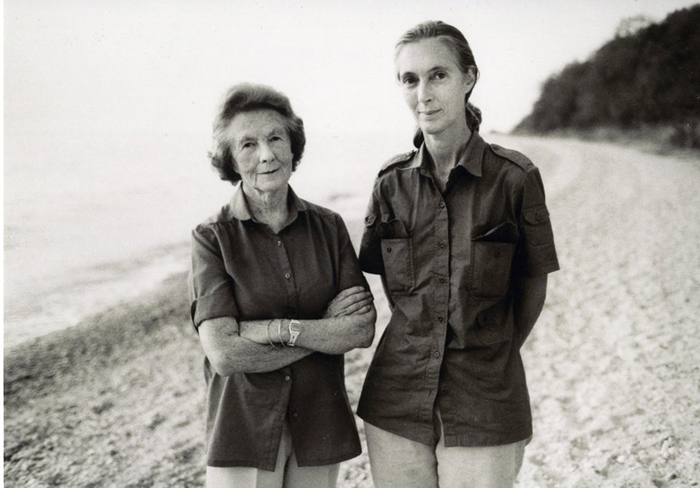
Some of the most successful women in Science, Technology, Engineering, and Math, have also been mothers. Many were also supported and encouraged by their own moms. Today, even more mothers are encouraging their daughters to break new ground in STEM fields. In honor of these women we bring you the stories of three mother-daughter teams. We celebrate them and all moms this Mother's Day and every day.

Marie Curie & Irene Joliot-Curie
Marie Curie was the first woman to win a Nobel Prize, the first person and only woman to win twice, and the only person to win in multiple sciences. She was also the first woman to become a professor at the University of Paris. During World War I, Marie Curie became the director of the Red Cross Radiology Service and set up France's first military radiology center. She supervised the implementation of 20 Mobile assistance units. Marie was assisted by a military doctor--and her 17-year-old daughter Irène. Irène Curie took nursing classes and assisted in the battlefield hospitals taking X-rays. Influenced by her mother's great work in STEM, Irène Joliot-Curie, went on to do great things herself. After the war, Irene finished school at the Sorbonne with a degree in physics and math. She then started working at the Radium Institute, which was founded by her mother. There she met fellow scientist Frederic Joliot. Irene and Frederic soon fell in love and were married, they took each other's names both becoming Dr. Joliot-Curie. They made several important discoveries in radiation together and won the Nobel Prize in Chemistry in 1935. Prior to World War II Irene and Frederic had made all of their work public but as WWII became imminent, they decided that some of their research could be very dangerous in the wrong hands.
They locked all their research on nuclear fission into the vaults of the French Academy of Science, where it stayed until 1949. After the war ended Irène was made the Director of The Radium Institute and continued to inspire other scientists. She was also a great champion of women’s rights, especially in advocating for education for women. Later in her life she joined the National Committee of the Union of French Women, and also served on the World Peace Council. There is an annual Irène Joliot-Curie prize given in France to exceptional women in science. Irene had two children, Helen, and Pierre. They both followed their parent's footsteps and had careers in nuclear physics and biochemistry respectively. Read more about Irène Joliot-Curie here on SheHeroes.
Kimberly Bryant & Kai Morton
When Kimberly Bryant's daughter Kai came home from science camp one evening, she was disappointed to  learn that Kai was one of a handful of girls and the only Black girl in her classes. More than that, Kai informed her mother that the boys were getting much more instruction than the girls. Kai's love of science and lack of mentoring in traditional models inspired her mother to start a non-profit organization offering a pipeline to Black girls and other girls of color into the tech community. Kimberly, a successful electrical engineer of 20 years, took her daughter's experience and launched Black Girls Code. Bryant describes Black Girls Code as, "a group of programs in robotics, web design and development, mobile app development, game development, and traditional programming."
learn that Kai was one of a handful of girls and the only Black girl in her classes. More than that, Kai informed her mother that the boys were getting much more instruction than the girls. Kai's love of science and lack of mentoring in traditional models inspired her mother to start a non-profit organization offering a pipeline to Black girls and other girls of color into the tech community. Kimberly, a successful electrical engineer of 20 years, took her daughter's experience and launched Black Girls Code. Bryant describes Black Girls Code as, "a group of programs in robotics, web design and development, mobile app development, game development, and traditional programming."
"All of our programs focus on integrating entrepreneurial elements in all of our sessions so that we cultivate these leadership skills in all of our students,” says Bryant. Black Girls Code helps boys and girls from underrepresented communities ages 7-17 gain skills to build a better future. Thank you, Kai! Image: Kimberly Bryant and Kai Morton.
Jane Goodall & Margaret "Vanne" Morris-Goodall

Jane Goodall and her mother Vanne sort specimens in a tent in Gombe Stream Chimpanzee Reserve.
Dr. Jane Goodall, the world's foremost authority on chimpanzees valued motherhood immensely and often shared how much her own mother's support empowered her in pursuing her career. She once said of her mother, "My family has very strong women. My mother never laughed at my dream of Africa, even though everyone else did because we didn't have any money, because Africa was the 'dark continent' and because I was a girl." When Goodall first studied chimpanzees for 6 months in - what is now - Tanzania, British colonialist authorities required her to have a traveling companion. It was her mother, Vanne, who volunteered to be her companion in the field.
"The first few weeks, I was very worried because the chimps would flee as soon as they saw me. I knew if I didn't discover something important before my grant ran out, that would be the end of the project. It was wonderful to have Vanne there; she kept my spirits up, pointing out all the things I was learning about the chimps from a distance, and entertaining me with stories about the local people she was meeting while I was in the field. Three months after we arrived, we both got malaria. But Vanne never complained once," said Goodall in an interview with Michael Shapiro.